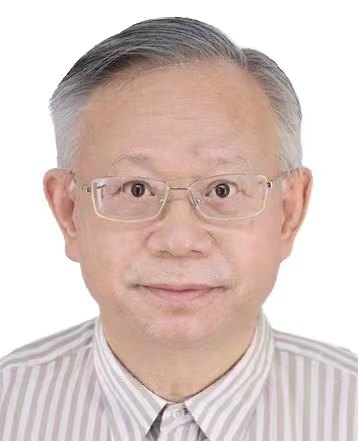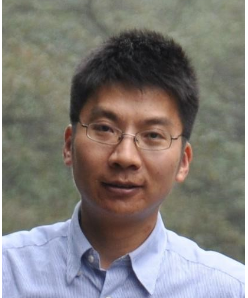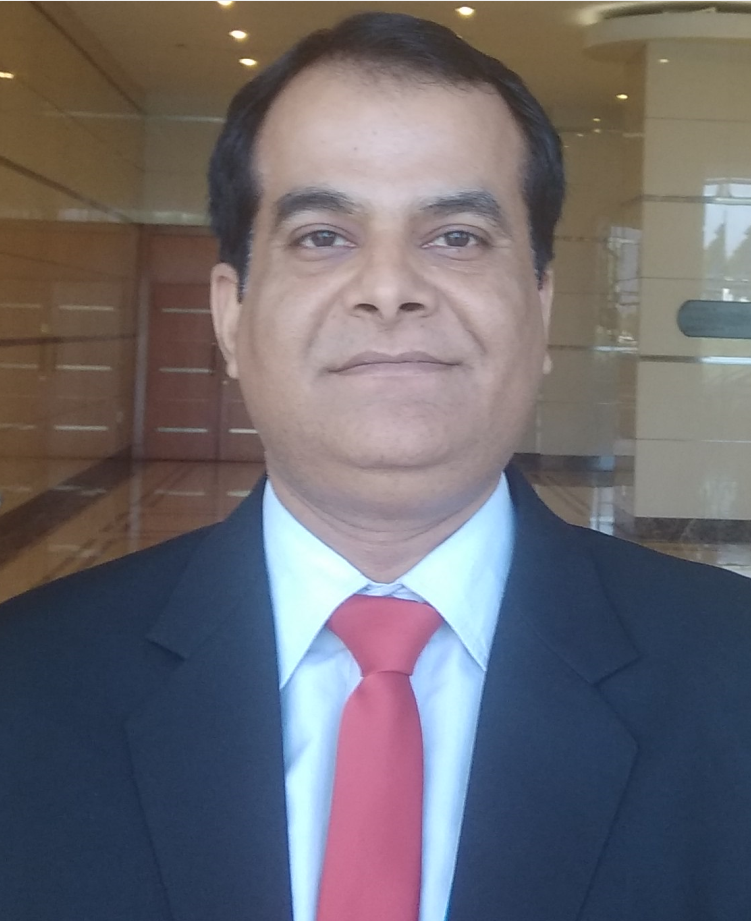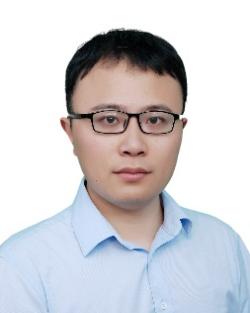Prof. Loi Lei Lai, IEEE Life Fellow, IET Fellow,DRPT International Incorporated, Perth, AustraliaBIO: ProfessorLoi Lei Lai received his B.Sc. (First Class Hons.) and Ph.D. from the University of Aston, Birmingham, UK, in 1980 and 1984 respectively. His D.Sc. is from City, University of London, London, UK, in 2005. All degrees are in electrical and electronic engineering. Professor Lai is currently Chairman of DRPT International Incorporated, Australia. He was a Pao Yue Kong Chair Professor with Zhejiang University, Hangzhou, China; Professor & Chair of Electrical Engineering with City, University of London, London, UK and University Distinguished Professor with Guangdong University of Technology, Guangzhou, China. Professor Lai received an IEEE Third Millennium Medal, the IEEE Power and Energy Society (IEEE/PES) UKRI Power Chapter Outstanding Engineer Award in 2000, a special award from City, University of London in 2005 and is its honorary graduate, the IEEE/PES Energy Development and Power Generation Committee Prize Paper in 2006 and 2009 (Papers published in IEEE Transactions on Energy Conversion), the IEEE Systems, Man, and Cybernetics Society (IEEE/SMCS) Outstanding Contribution Award in 2013 and 2014, the Most Active Technical Committee Award in 2016, and his research team received a Best Paper Award in the IEEE International Smart Cities Conference in October 2020. Professor Lai is an Associate Editor of the IEEE Transactions on Systems, Man, and Cybernetics: Systems, Editor-in-Chief of the IEEE Smart Cities Newsletter; a member of the IEEE Smart Cities Board of Governor; Member-at-large, IEEE Technical Activities Board (TAB) Committee on Standards & Chair of the Seed Funding ad hoc, Chair of IEEE/SMCS Standards Committee, IEEE/SMCS Fellow Committee Evaluator, IEEE/SMCS Distinguished Lecturer and IEEE/PES Lifetime Achievement Award Committee Assessor. He was a member of the IEEE Smart Grid Steering Committee; the Director of Research and Development Center, State Grid Energy Research Institute, Beijing, China; a Vice President for Membership and Student Activities of IEEE/SMCS; and a Fellow Committee Evaluator and Distinguished Lecturer for the IEEE Industrial Electronics Society. His current research and development interests are in smart cities, smart grid, clean energy and computational intelligence. He is an IEEE Life Fellow and IET Fellow. Title: Machine Learning for Smart Cities Abstract: This talk covers some important topics associated with machine learning research and application to systems such as microgrid control & management, health, mobility and education. To achieve net-zero emissions by 2050/2060, and mitigate global warming, people need to promote sustainability and adopt renewables. Smart energy network control, operation, management, and planning will play a key role in a carbon-neutral society. Major environmental, economic, and technological challenges such as climate change, economic restructuring, pressure on public finances, cyber security, digitalization of the retail and entertainment industries, and growth of urban and ageing populations have generated huge interest for cities to be run differently and smartly. There is a consideration in urban air mobility to provide service for inter- or intra-urban transport in alleviating environmental problems, due to the use of electric vertical take-off and landing aircraft. Also, there is study in an energy efficient memristive sequence network for human emotion classification in mental health monitoring. Some current international research and development activities will be reported, future directions and the importance of various readiness levels will be discussed. |
|
| Prof. Nong SangHuazhong University of Science and Technology, ChinaBIO: Nong Sang received his BE degree in computer science and engineering in 1990, MS degree in pattern recognition and intelligent control in 1993, and PhD degree in pattern recognition and intelligent systems in 2000. He is currently a professor at the School of Artificial Intelligence and Automation, Huazhong University of Science and Technology, Wuhan, China. His research interests include low-quality image enhancement, object detection and recognition, object tracking, image/video semantic segmentation, action detection and recognition. Title: From Video Anomaly Detection to Video Anomaly Understanding Abstract: In fields like intelligent surveillance, the sheer amount of video data demands automated technologies for analyzing abnormal behavior. Yet, current technologies are commonly hindered by two key problems: a poor trade-off between the cost of annotation and model performance, and a failure to deeply understand or explain anomalies. Consequently, the central challenge is to build detection models that are both efficient and accurate, and can also offer a profound understanding of abnormal behavior. This report focuses on these two core challenges in video anomaly analysis—moving from "efficient detection" to "deep understanding"—and introduces our solutions for them. To address the high cost of annotation, we present GlanceVAD, a method based on a "glance-style supervision" paradigm. This approach dramatically reduces annotation costs while striking an outstanding balance between detection accuracy and annotation efficiency. To bridge the gap from simply detecting anomalies to truly understanding them, we developed Holmes-VAU. This method utilizes Multimodal Large Language Models (MLLMs) to adaptively focus on critical anomalous clips, allowing for a multi-level, in-depth understanding and explanation of the events. |
Prof. Qijun ZhaoSichuan University, ChinaBIO: From 1999 to 2006, Dr. Zhao obtained his bachelor's and master's degrees from the Department of Computer Science at Shanghai Jiao Tong University. From 2006 to 2010, he earned his Ph.D. from the Department of Electronic and Computer Engineering at The Hong Kong Polytechnic University. He conducted postdoctoral research at Michigan State University from 2010 to 2012, and returned to China in 2012 to join Sichuan University, where he has served as an associate professor and professor. Since August 2019, he has been supporting Tibet as the Deputy Dean and discipline leader of the School of Information Science and Technology at Tibet University. Dr. Zhao has been engaged in research in the fields of biometric recognition and computer vision, with recent research interests primarily focusing on 3D modeling and recognition and their applications in criminal science, video surveillance, healthcare, human-computer interaction, as well as object detection and recognition and their applications in ecological surveys, wildlife protection, and crowd analysis. Dr. Zhao has published over 80 academic conference and journal papers, including those in CVPR, ECCV, AAAI, ICB, PR, IEEE TPAMI, and IEEE TIFS, and has authored and translated two books related to computer vision. He holds one U.S. patent and five Chinese patents. Dr. Zhao has led research projects, including youth and general projects funded by the National Natural Science Foundation, sub-projects of the 13th Five-Year Plan's key R&D program, provincial and ministerial projects, and several industry collaboration projects. He has long served as a reviewer for well-known journals and conferences in his field, such as IEEE TPAMI, IEEE TIFS, PR, PRL, ICCV, CVPR, ECCV, AAAI, ICIP, and ICPR. Title: Multi-modal Computing based Animal Recognition Abstract: Identifying animal species and attributes, distinguishing individual animals, and understanding their behaviors are of vital importance for wildlife monitoring and conservation. In recent years, driven by emerging deep learning technologies, multi-modal computing integrating computer vision and audition has witnessed rapid development, providing more efficient solutions for animal recognition. This has strongly promoted the empowerment of ecological civilization construction and rural revitalization by artificial intelligence technologies. This speech will introduce the applications of audio-visual computing technologies in animal recognition and present some of our recent research achievements in the field of animal biometric recognition. These include species identification, individual recognition, and behavior recognition based on appearance features, as well as animal attribute classification, emotional analysis, and behavior recognition based on vocalizations. |
|
| Prof.Sudeep TanwarNirma University, IndiaBIO: Sudeep Tanwar (Senior Member, IEEE) is working as a full professor at the Nirma University, India. He is also a Visiting Professor with Advanced Research Lab, Florida, USA, WSG University, Bydgoszczy, Poland, Jan Wyzykowski University, Poland, and University of Pitesti, Romania. He is senior member of IEEE and also Vice Chair of IEEE Computer Society Gujarat Section, India. He received B.Tech in 2002 from Kurukshetra University, India, M.Tech (Honor’s) in 2009 from Guru Gobind Singh Indraprastha University, Delhi, India and Ph.D. in 2016 with specialization in Wireless Sensor Network. He has authored 05 books and edited 25 books, more than 450 technical articles, including top cited journals and conferences, such as IEEE TNSE, IEEE TVT, IEEE TII, IEEE TGCN, IEEE TCSC, IEEE IoTJ, IEEE NETWORKS, IEEE WCM, ICC, IWCMC, GLOBECOM, CITS, and INFOCOM. He initiated the research field of blockchain technology adoption in various verticals in the year 2017. His H-index as per Google Scholar and Scopus is 85 and70, respectively. His research interests include blockchain technology, D2D communication, Deep Learning/machine Learning, wireless sensor networks, fog computing, smart grid, and the IoT. He is a member of the Technical Committee on Tactile Internet of IEEE Communication Society. Recently, He has been awarded cash prize of Rs, 50,000 for publishing papers with 5+ Impact factor and publication of books with Springer, IET & CRC under the scheme of "Faculty Awards and Incentives" of Nirma University for the year 2019-2020. He has been awarded the Best Research Paper Awards from IEEE SCIoT 2022, IEEE IWCMC-2021, IEEE ICCCA-2021, IEEE GLOBECOM 2018, IEEE ICC 2019, and Springer ICRIC-2019. He has won Dr KW Wong Annual Best Paper Prize (with 750 USD) for 2021 sponsored by Elsevier (publishers of JISA). He has served many international conferences as a member of the Organizing Committee, such as the Publication Chair for FTNCT-2020, ICCIC 2020, and WiMob2019, and a General Chair for IC4S 2019, 2020, 2021, 2022, ICCSDF 2020, FTNCT 2021. He is also serving the editorial boards of COMCOM-Elsevier, IJCS-Wiley, Cyber Security and Applications- Elsevier, Frontiers of blockchain, SPY, Wiley, IJMIS journal of Inderscience, JCCE, and JSSS. He is also leading the ST Research Laboratory, where group members are working on the latest cutting-edge technologies. Title: Amalgamation of Blockchain and AI for 5G and Beyond Applications: Opportunities and Challenges |
Prof. Wenhua QianYunnan University, ChinaBIO: Wenhua Qian, Ph.D., Professor of the School of Information, postdoctoral researcher at Southeast University, industrial innovation talent under Yunnan Province's "Xingdian Talent Support Program," outstanding young talent of Yunnan Province's "Ten Thousand Talents Program," and academic technology leader for young and middle-aged professionals in Yunnan Province. He is a core member of the School of Information's signature research direction in "Graphic and Image Processing." He has been selected for Yunnan Province's Outstanding Youth Cultivation Program and the Yunnan University Backbone Teacher Training Program. Dr. Qian is a senior member of the China Computer Society, a council member of the China Society of Image and Graphics, a senior member of the China Graphical Society, a committee member of the CAD/CG Special Committee, a member of the National Digital Entertainment and Simulation Society, a member of the Chinese Computer Vision Professional Committee, a member of the Digital Cultural Heritage Professional Committee, a member of the Education Professional Committee of the Yunnan Computer Society, and a committee member of the Teaching Guidance Committee for computer-related disciplines in Yunnan Provincial Universities. He serves on the editorial board of the Journal of Image and Graphics in China, and on the editorial boards of journals such as Computers & Graphics. He has also served as the chairman of the YOCSEF Kunming Subforum of the China Computer Society. Title: Cultural Digital Simulation and Visual Comprehension Abstract: There exist many special art works in China, such as Chinese ink painting, Chinese paper cutting, Chinese calligraphy, etc., as well as Batik painting, Dongba writing, woodcut special works in Yunnan. The multi-ethnic cultural heritage of Yunnan Province holds an important position in the cultural heritage of the Chinese nation. The number of its material and intangible cultural heritages ranks among the top in China. This report introduces the research work of the Virtual Media Computing and Cognitive Laboratory (VMC). By combining traditional methods with deep learning methods, it has conducted research on the digitization, stylized transmission, and understanding of artistic styles of ethnic cultures based on some unique artistic styles and ethnic cultures. This report mainly includes: (1) Feature extraction and calculation of culture and visual media; (2) Digital simulation and stylized transmission of ethnic cultures; (3) Extraction and scientific understanding of the visual connotations of representative cultures. Through digital simulation to display cultural and artistic styles, it is applied in fields such as cultural protection and inheritance, publicity and display. |
|
Prof. Yu LiuHefei University of Technology, ChinaBIO: He has successively led and participated in several national-level projects, including general projects and key projects from the National Natural Science Foundation and the National Key Research and Development Program, with results applied in pioneering domestic artificial intelligence enterprises. He has received multiple honors, including the Second Prize of the Anhui Provincial Natural Science Award and the Wu Wenjun Artificial Intelligence Excellent Young Talent Award. He has been recognized in various academic lists, including Clarivate's Global Highly Cited Scientists, Elsevier's China High Cited Scholars, and the list of the top 2% of scientists worldwide. He holds over 20 authorized invention patents and has published more than 100 papers in renowned international academic journals and conferences, such as IEEE TPAMI, IJCV, and IEEE TIP. Additionally, he serves on the editorial boards of several prominent journals, including Information Fusion, IEEE Signal Processing Letters, and the Journal of Image and Graphics in China. Title: Multi-modal Medical Image Fusion Methods and Applications Abstract: Multi-modal medical image fusion technique aims to combine the important information contained in medical images with different modalities of the same scene, by generating a fused image that can describe the scene more comprehensively, which will be helpful to the perception and decision of medical practitioners or intelligent medical systems. This talk will introduce the recent research achievements of our group on medical image fusion methods and applications. |
|






